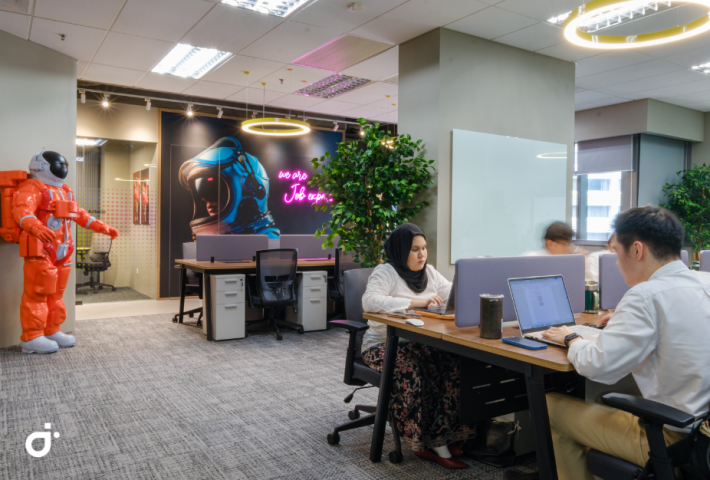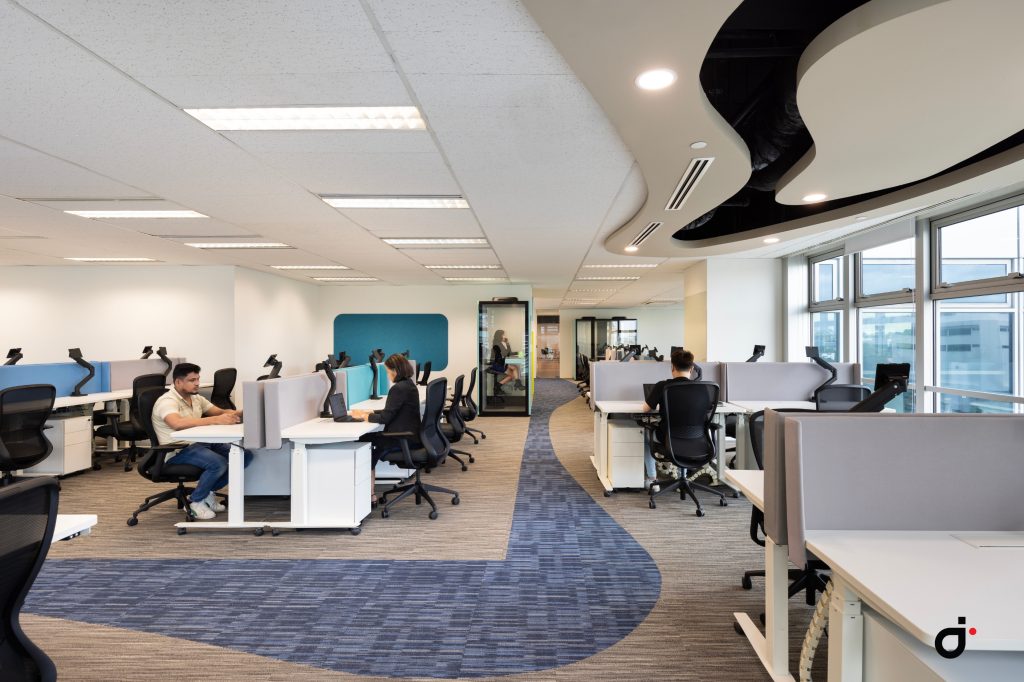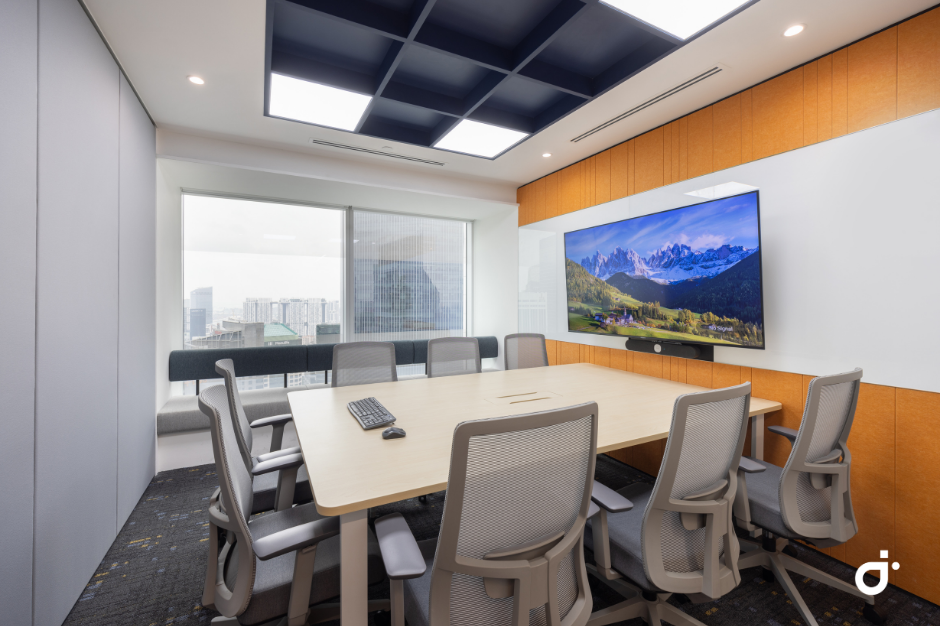Boost Productivity with the Best Office Layout Design: Your Ultimate Guide to a Smarter Workspace
April 15, 2025
This ultimate guide navigates through various office layout designs, offering insights into planning efficient spaces, choosing the right furniture, and integrating technology. Discover how thoughtful office design can foster a healthier, more productive work environment for traditional office setups.
Understanding the Importance of Office Layout Design
Office layout design is a critical component of any successful workplace. It shapes the flow and functionality of a workspace, directly impacting day-to-day operations. The chosen layout reflects a company’s brand and influences the office environment, affecting productivity and employee satisfaction.
The Impact of Office Design on Productivity and Employee Well-being
A well-thought-out office design is pivotal in enhancing productivity and employee well-being. It can significantly influence morale, motivation, and job satisfaction. Incorporating natural light and ergonomic furniture boosts mood and increases comfort and efficiency, reducing absenteeism and increasing productivity.
Modern office environments focus on creating spaces that foster a sense of community and collaboration. Open-plan offices encourage teamwork, while private spaces are essential for focused, individual work. Balancing these elements in an office space can improve the workplace experience and support a vibrant company culture.
How Office Layouts Can Boost Productivity and Mental Health
The strategic design of office layouts can substantially boost productivity and mental health. Office spaces encouraging collaboration and communication can enhance teamwork, leading to innovative problem-solving and a sense of belonging among employees. Natural light and ergonomic furniture reduce stress and improve mental health.
Private offices or quiet zones offer employees a space to focus without distractions, which is essential for tasks requiring deep concentration. Flexible office layouts, such as hybrid models and hot desks, accommodate various working styles, supporting individual workstations and collaborative spaces. These design elements collectively contribute to a healthier and more productive work environment.
Types of Office Layouts
Office layouts significantly impact productivity by shaping how employees interact and work. Choosing the right design can enhance job satisfaction and boost employee morale. Each type of office layout has distinct advantages and can be tailored to fit the company’s unique needs. The right design is integral to creating an effective office environment, from fostering collaboration to providing private spaces.
Traditional Office Layout

Traditional office layouts typically center around private offices and cubicles. These layouts are designed to support focused work by minimizing distractions and ensuring privacy for each employee. While they create a quiet environment conducive to concentration, they might limit spontaneous communication and collaboration opportunities. However, their structured nature can give employees personal space, aligning with those who prefer less interaction during focused tasks.
Open-Plan Office Layout

Open-plan office layouts emphasize an open and collaborative environment designed to foster communication and teamwork. These layouts break down barriers, encouraging employee creativity and interaction and allowing for the flow of natural light, enhancing well-being. However, the absence of partitions can sometimes lead to noise distractions, potentially affecting concentration levels. Finding a balance to mitigate these downsides is crucial to maintaining productivity in open-plan setups.
Co-Working Office Layout

Co-working office layouts focus on shared workspaces and collaborative areas, catering to professionals from various organizations. This setup promotes networking, innovation, and entrepreneurship as individuals and teams mingle and share ideas. While the environment is dynamic and stimulating, it can become competitive, and the bustling atmosphere may occasionally disrupt concentration. Despite these challenges, co-working spaces are ideal for fostering community and collaboration.
Designing an Efficient Office Layout
An efficient office layout is crucial for boosting productivity and enhancing employee satisfaction. The design should balance open spaces for collaboration and private areas for focused work. Integrating ergonomic furniture and modern technology can significantly improve employee well-being and morale. Furthermore, optimizing natural light and strategically designing spaces can foster a positive workplace experience.
Factors to Consider When Planning Your Office Layout
When planning your office layout, aligning with your company culture and work style is essential. A hybrid office might suit a tech-savvy workforce, while more traditional layouts, like cubicles or individual offices, could benefit roles requiring concentration. Analyze employee needs and preferences, which are vital for enhancing job satisfaction.
Space, budget, and technology requirements are key elements in this process. Consider the available square feet and how different office layouts, such as open-plan or private offices, will fit the space. Ensure that the budget accommodates necessary technological advancements and ergonomic furniture. A well-thought-out office environment can enhance community and employee engagement and support organizational goals.
How Much Space Do You Need for Maximum Productivity?
Determining the right space for your office involves assessing work styles and employee needs. The type of work performed and the number of employees significantly impact space requirements. As a general guideline, allocate 100-150 square feet per employee to accommodate individual workstations and necessary equipment. This ensures a comfortable environment that facilitates productivity and efficient task completion.
Creating a Floor Plan for Focused Work
When creating a floor plan, focus on minimizing distractions to promote concentrated work. Strategic placement of private offices and meeting rooms can help achieve this goal. Consider the traffic flow to reduce interruptions in areas designated for quiet, focused tasks. Implement space-saving solutions like modular furniture and innovative wall storage to optimize available space, enhancing employees’ ability to concentrate.
Maximizing Natural Light and Ergonomic Furniture
Optimizing natural light in an office setting can significantly uplift mood and productivity. Position desks near windows, use mirrors to reflect light and consider skylights to enhance illumination. Additionally, incorporating ergonomic furniture is crucial in maintaining employee comfort and reducing physical strain. By selecting furniture that supports posture and reduces eye strain, you can cultivate a healthier, more productive office environment.
Creating a Productive Workspace
Designing a practical office layout is crucial for enhancing productivity and job satisfaction. A well-designed office environment encourages collaboration, supports employee well-being, and fosters a sense of community. Natural light, ergonomic furniture, and collaborative spaces should be considered to ensure a positive workplace experience.
Choosing the Right Furniture for Your Office Design
Selecting the right furniture is vital in crafting a productive office space. Ergonomic and adjustable desks ensure comfort, enhancing employee morale and satisfaction. Consider the type of work, the number of employees, and the necessary equipment to determine the ideal furniture setup. Sustainable options can further optimize space and environmental impact, promoting a healthier office environment.
Innovative Solutions for Modern Office Challenges
Modern office environments face noise, distractions, and technological demands. Solutions like soundproofing and acoustic panels and integrating innovative technology can significantly enhance the workplace experience. Space-saving solutions, such as modular furniture and innovative wall storage, help maximize available square feet, promoting efficiency and reducing clutter.
Space Saving Ideas for Small Offices
Small offices need Efficient space management to maximize productivity and employee satisfaction. To optimize limited space, utilize modular furniture, wall-mounted shelves, and multi-functional equipment. Additionally, using vertical spaces with innovative storage solutions can reduce clutter and create a more organized and functional environment.
Technology Integration for Efficiency and Connectivity
Technology is vital in boosting efficiency and connectivity in today’s office environment. With the right tools, companies can streamline operations and improve communication among team members. This integration supports daily tasks and builds a stronger sense of community and collaboration—both key to job satisfaction.
Harnessing Technology for Smart Workspaces and Collaboration
Innovative solutions such as video conferencing, virtual reality, and artificial intelligence are transforming traditional office setups into innovative, modern workspaces. These tools enable smooth collaboration, even in hybrid settings, making teamwork between remote and in-office employees just as practical. Real-time connectivity fosters a more collaborative environment that drives productivity.
Optimizing technology in the office helps reduce distractions and improve focus. Intelligent systems allow seamless communication, enabling teams to concentrate on creative and strategic work without constant interruptions. This enhanced focus boosts morale and job satisfaction, critical factors in retaining top talent.
Effective tech integration also allows employees to personalize their workstations. Features like adjustable desks and ergonomic furniture support comfort and health. This personalization enhances productivity and promotes employee well-being, creating a healthier and more enjoyable workplace experience.
Maximizing Space Utilization
In modern offices, maximizing space is key to boosting productivity and improving employee well-being. The proper layout can turn a small area into a functional, multi-purpose workspace. Design elements like ergonomic furniture and natural light can significantly increase job satisfaction and morale.
Adopting a hybrid or open-plan layout encourages flexibility and teamwork, while private rooms support focused work. Thoughtful planning of every square foot can create a vibrant, engaging environment that reflects a strong and positive company culture.
Making the Most of Vertical Space and Including Storage Solutions
Clever use of vertical space can significantly improve office efficiency by cutting down clutter and tidying the space. Wall-mounted shelves and storage units save floor space while improving overall workplace organization.
Clever designs—like adjustable desks and ergonomic furniture—also help make the most of available space. Multi-functional furniture reduces waste and uses resources efficiently. For example, desks with built-in storage or foldable pieces help keep things neat and accessible.
These thoughtful solutions create a welcoming atmosphere, support collaboration, and build community. A well-organized space makes essential items more straightforward and boosts productivity and employee satisfaction.
Best Practices for a Healthy and Productive Office
A well-designed office layout boosts both productivity and employee satisfaction. Features like natural light, ergonomic furniture, and private spaces can significantly improve the work environment. Modern office designs aim to build community and encourage collaboration while offering focused, individual work areas. Key elements such as adjustable desks, shared workspaces, and efficient use of space help enhance employee well-being and morale.
Promoting Cleanliness, Organization, and Employee Well-being
A clean and organized workspace is crucial for maintaining productivity and employee health. Regular cleaning and competent organization systems reduce clutter and create a more welcoming environment. Employee satisfaction is also tied to wellness programs, mental health support, and recognition initiatives. Providing private offices or personal workstations can further boost morale and job satisfaction.
Encouraging Movement and Mental Health in the Workplace
Promoting movement and mental wellness at work is essential for keeping morale high and employees engaged. Standing desks and office fitness equipment encourage physical activity, while outdoor activities build a stronger sense of community. Wellness programs and mental health support make a big difference in the workplace experience. Recognizing and rewarding employees also plays a key role in creating a positive and uplifting office culture.
Conclusion
A successful office layout design hinges on key elements like natural light, ergonomic furniture, and spaces for employees to enhance job satisfaction and company culture. Incorporating private offices and collaboration spaces ensures a balanced office environment that accommodates focus and teamwork. Whether adopting a traditional office layout or a modern hybrid office, prioritizing employee well-being is essential.
Consider the various types of office layouts to best suit your needs. A cubicle office layout offers private space, while an open-plan office promotes a sense of community. Adjustable desks and individual workstations enhance comfort and efficiency, while hot desks provide flexibility. Regardless of your choice, employee satisfaction and morale play vital roles in fostering a positive workplace experience.

ID INTEGRATED
Why Choose ID Integrated for the Best Office Layout Design?
Smart Design. Maximum Productivity.
At ID Integrated (IDI), we create office layouts that enhance productivity, creativity, and employee well-being. Our innovative approach blends functional design, ergonomic solutions, and seamless workflow integration to craft inspiring workspaces that drive business success.
- Optimized Workspaces: Thoughtfully designed layouts to maximize space utilization and efficiency.
- Collaborative & Private Zones: A perfect balance between teamwork areas and quiet spaces for focused work.
- Ergonomic & Future-Ready Solutions: Comfortable, adaptable designs that evolve with your company’s needs.



